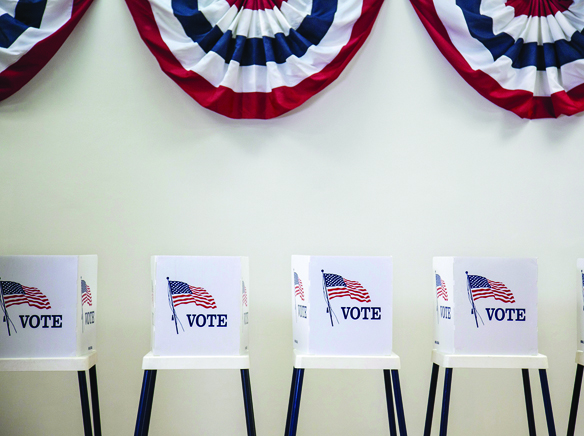District Five
Question 3: What is your position on the future of the parklets on Main Street?
Mariann Klinger
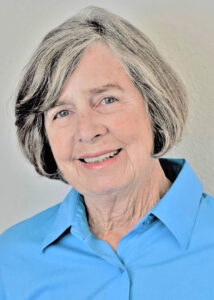
Walking down Main Street, regaled by the laughter and conversation of the many diners and walkers there to enjoy their city, represents something positive that came out of the past two years.
I put my bid in for a permanent arrangement of parklets more than a year ago, asking planners how that might be worked out. I would definitely support efforts by the city to make them an established part of the city’s downtown. I would work to get the okay on the plan from the Local Coastal Commission.
I know that the loss of parking space is an issue, but truth be told, I can look at parked cars anytime, but a great downtown is another story.
Michael McGrorty

The parklets were an accommodation to COVID, in order that restaurants could remain open with outside dining. That emergency is over. There’s an old saying “what were once vices are now habits.” This certainly applies to the parklets. These were intended as a temporary accommodation to private businesses, not a permanent feature of the landscape. As such, the problems they created were tolerated, ostensibly for the short term. They should not be made permanent. The reasons for this are that they are a seizure of space that was and ought to be used for parking and pedestrian movement. Hidden in all this is the city’s preference for private business interests over those of the ordinary citizen; and of course, the Seal Beach policy of supporting the beach area’s commercial interests over those of any other portion of the town. Imagine if a homeowner requested a zoning variance so that he could build a pergola out into the parking area of his street. The city would rightly refuse this as an infringement of the rights of his neighbors. So it should be with the parklets. My own neighbors in Leisure World find it difficult if not impossible to navigate the downtown area because of the parklets, which require people in walkers, wheelchairs, and electric trikes to negotiate a minefield of barriers just to head down an ordinary street. But the city is more concerned with the approval of the downtown businesses than with these people. Money talks, and ordinary people walk, if they can, around these obstructions. Acceptance of the parklets is another fence put up between the beachfront interests and the rest of the town. The rest of us should not have to stand by and watch our open areas stolen away bit by bit.
John Rich

The pandemic was the original impetus for the parklets, and they have become a charming amenity, allowing outdoor dining in Seal Beach and many other cities. The city held a meeting in September to consider the pros and cons of parklets. This innovation is supported by the Chamber of Commerce and viewed positively by many of the Main Street businesses. Many restaurants see the parklets as a nice environment that is good for business. But the downside is that some parklets have been poorly maintained and maintenance is difficult to enforce because there are currently no standards in the city code that apply to this.
These parklets are a boon to restaurants, increasing their seating capacity and providing an enjoyable outdoor dining atmosphere. However, they present maintenance issues and reduce parking revenue. The best solution would be to retain the parklets, but for the City to adopt maintenance standards and codes so that the eateries assume more of the responsibility for standard maintenance and lost revenue to the City.
Jonathan Rich, PhD
PsychologicalTesting.com
Nathan Steele
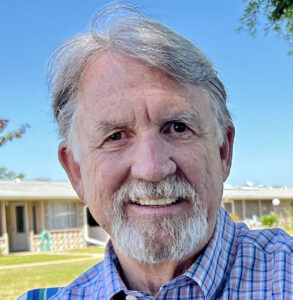
When I lived in Madrid, I loved sitting in the charming cafes that surround Plaza Mayor or Parque Retiro, having a coffee or a caña and watching the world in its infinite variety pass by. But those are pedestrian areas with plenty of room for people, pedestrians, tables and chairs.
Main Street is not a pedestrian-only area and the parklets are less than charming. They are unattractive and not well-constructed.
If parklets were to become a permanent part of Main Street life, they would have to be better constructed than painted plywood and tarps for canopies. The city would have to charge higher rents for the spaces. And merchants should be allowed to use the great outdoors too, extending their retail space or create their own version of parklets. New restaurants coming to Main Street would have an equal right to their own parklet.
We need a cohesive and attractive vision for Main Street shopping and a Master Plan so that improvements and upgrades all contribute to that vision. It should lean more toward a “Disney-feel”, bright and cheery, inviting to all.
As it is, Main Street is somewhat clogged and not particularly attractive in places.
Question 4: Would you support a parking structure on either Eighth Street or on the current beach parking lot?
Mariann Klinger
As for attempts to solve the parking issue with a parking structure, I would support a structure on eighth street rather than at the current beach parking. Among the attractions to downtown are the beach, the pier, the ocean view and the park areas, a parking structure might interfere with the city’s main attractions and residents’ pleasure.
Frequently, off site parking becomes the answer at beach and tourist cities. I think it would work for Seal Beach, as well.
Michael McGrorty
That depends on what you mean by “support.” The area certainly could use additional parking for visitors, and it could be constructed in either place to the benefit of the commercial area of the beachfront. There are two considerations here: First, that businesses in the north end of town would receive no benefit whatever; nor would the ordinary homeowner. Whatever structure is built should be funded out of the pockets of the beneficiaries, meaning the private businesses of that district, and/or its users. Ideally the structure could be funded through parking fees (metering, gate-pay, et cetera). Even so, this would require up-front spending, which would call for borrowing and debt.
The city should not assume debt to fund this structure. The cost of borrowing far exceeds the price of construction, and the indebtedness prevents the city from attempting other ventures, and possibly affects its credit rating.
I can see a scenario arising in which the business owners of the beachfront area attempt to negotiate approval of their parklets by pressing for a parking structure, with the argument that the new parking will address the reduction of parking they caused with the parklets. This argument obviously holds no water. The parklets are not only a reduction in parking, but in movement and access, not to mention a blight and an eyesore. New parking should be the burden of the businesses it benefits, and the appropriated parklet areas cannot be used as bargaining chips to force the larger community to accept a debt for a structure that provides nothing to them. There is much more to Seal Beach than the beachfront. It’s time the city understands this and acts accordingly.
Jonathan Rich
There are better uses of space than large parking structures; more cars coming and going on Main Street is not the “green” future that I envision. The city is currently considering the introduction of electric shuttles. Combined with other public transportation, this can invite shoppers and tourism in the downtown area without increasing traffic congestion or our carbon footprint . We could even consider negotiating with local, large businesses, such as Boeing, for the public to use their large parking lot on weekends, taking a free shuttle to downtown.
Jonathan Rich, PhD
PsychologicalTesting.com
Nathan Steele
I need more information. I would support a parking structure at 8th Street but not beach locations. But, I’m not sure it’s needed or what the economic impact would be. Would it bring more traffic to downtown and more business to our merchants? Is there an economic case to be made for making the investment? Would it self-fund with parking meter revenues? How much would it cost to enforce meters and codes or maintain?
District One
Question 3: What is your position on the future of the parklets on Main Street?
Gregg Barton
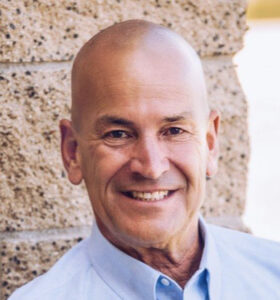
Parklets had their purpose during COVID. Restaurants were not allowed to operate inside. We needed the parklets if our restaurants were to survive. These outdoor gathering spaces kept us safe and, at the same time, kept our community together.
But, today, the restaurants are open and the parklets are added, unneeded square footage. They take away parking and push cars into our residential neighborhoods.
What should be done? Bring the restaurants, merchants and residents together to discuss them and make a plan. What has been done: A consultant was hired instead.
Parklet pilot programs originated in some towns several years before Covid 19, to help make downtowns a destination and to create gathering spaces.
But they can have a high cost. That’s the problem we face, entering a new phase of economic changes and budget shortfalls. The price of a parklet, from several sources, ranges from $15,000 to upwards of $50,000. This kind of tourism spending only makes sense when required for public safety or when it pays for itself and brings in added revenue.
A 2013 parklet pilot program in San Diego is reportedly plagued with problems, while one near San Francisco, started in 2018, is seen as a greater success, but with high costs. Some cities are considering keeping a limited number of parklets.
In this budget crisis, Joe Kalmick, as mayor, led the Council to hire a consultant, to tell us what to do, instead of bringing the stakeholders together. He should have listened to what they wanted and had the strength of character to make the best decision. Reminds me of the old adage: A consultant is one who borrows your watch to tell you what time it is.
After four years of Joe Kalmick, Main Street has never looked worse. It is dirty, with trash blowing into and out of the parklets. Remember when Main Street was clean and quaint, with flower baskets lining our street? It attracted residents and visitors alike, to come out and enjoy a day at the beach. It is time to clean up Main Street
Chris DeSanto

The future of Main Street is a far-reaching topic that affects us all. I’m happy to explain my opinion as a resident; however, in this case, the public’s support, input and consensus outweigh any personal opinion I might have. Given the immense impact on the community – changing iconic Main Street – I believe this is an issue that should be put on the ballot. While ideas can be kicked around, and conversations had, given the magnitude of this decision, I feel it best left and trusted with our community.
That said, my opinion leans towards restoring Main Street as it was, pre-COVID. There are three main drivers, outside of the obvious parking consideration, helping me arrive at this determination.
First – fairness. While many businesses were forced to close during COVID and needed assistance to stay afloat, operating restrictions have now been lifted. As a resident, I love nothing more than dining outside enjoying our temperate weather. As a businessman, providing additional real-estate to food and beverage businesses and not to others is something that deeply concerns me.
Second – presentation. I have extremely high standards for what a potential permanent parklet environment would look like. To permanently install outdoor dining, the underlying infrastructure would need to be altered to align with the quality-of-life standards we expect from our city. Who would pay for these upgrades? What would happen to these changes if some businesses initially sign on and later opt out? These are messy questions when you have infrastructure that operates in a way other than originally built and intended.
Third – COVID. As a mental health advocate, I am concerned about the lingering mental health effects of the past couple of years. To me, the parklets on Main Street are another, and constant reminder, of how our lives were uprooted and altered. In an attempt to return to a sense of normalcy, restoring Main Street to its pre-COVID charm and appearance, I believe, would prove beneficial for the overall health of our community.
Joe Kalmick
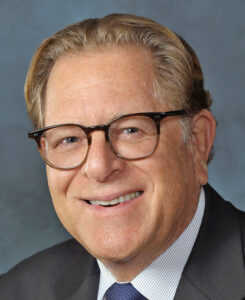
At the outset of the Covid-19 Pandemic when the State prohibited indoor dining, the Governor issued and emergency order that allowed for restaurants to begin serving outside. After receiving permission from the California Coastal Commission, the City expedited the ability for restaurants located on the Main Street corridor to utilize parking spaces in front of their locations to create dining areas that came to be known as Parklets. Public Works did an amazing job building and installing the gray street barriers in less than two weeks! There is no doubt in my mind that this action literally saved many of our Main Street businesses from having to close permanently.
As the Pandemic dragged on, the State kept extending the deadline for shutting down the outdoor dining program. In fact, the original emergency order now extends until January of 2024, which allows the City more time to study the pros and cons of continuing the Parklet program, making it permanent, or ending it. Councilman Varipapa and myself are serving on an Ad Hoc committee, along with our Staff to answer some important questions if we move forward to allow permanent outside dining.
The existing temporary Parklets would be replaced with something that is professionally designed and would be based upon a platform and constructed at the business owners’ expense, have landscaping and maintenance requirements, and would allow for the cleaning of the gutters. In addition, the business will be required to pay a substantial monthly encroachment fee for the use of the parking spaces. I believe that these new requirements would ultimately reduce the number of businesses that would wish to go forward due to the additional costs and maintenance responsibilities. Also, some of visibility problems of adjacent businesses would be addressed by a new Parklet design.
Enforcement of sidewalk passibility would also be addressed. Many businesses have reduced the ability for safe pedestrian traffic on the sidewalks with menu boards signs and items for sale.
And of course the parking issues must be studied and discussed. I know there are many businesses and residents that feel that our already limited parking cannot handle the loss of any parking spaces. We need to weigh this reality along with the benefits of increasing our attraction to folks that enjoy outdoor dining, both residents and visitors.
While I tend to favor the Parklet concept, we need more data and community input.
Question 4: Would you support a parking structure on either Eighth Street or on the current beach parking lot?
Gregg Barton
Parking is an issue that plagues all beach cities. Too much parking and you get chain stores and department stores; too little parking and no one wants to visit and residents can’t find needed parking. Remembering that our little town is tight with businesses and residents often sharing the same streets and alleys, a parking structure on 8th would be directly next to a home, in front of a home and across the street from homes. It is a residential area. This is no place for a parking structure. It is time to put our residents first! A parking structure could perhaps be aesthetically put at the beach, but, let’s put the parking back on Main Street where it belongs and then see if we need to add more
Chris DeSanto
8th Street – maybe. Beachside – a non-starter. To put a parking structure blocking our iconic beach views is simply out of the question.
That leaves 8th street as an option. We are all aware of the parking challenges in Old Town, from a residential and visitor vantage point. From pre-existing parking challenges to the new housing element state law, parking is only going to become an even larger issue. There are two ways to help alleviate the parking limitations – either to increase supply or decrease demand. We cannot control the number of cars on our streets, but are there strategies we can implement to reduce traffic and parking demand (e.g. micro-transit)? The other solution is increasing parking supply.
A major concern I’ve heard from residents is what a parking structure would attract. The structure has the potential to attract unwanted traffic, nuisances and safety concerns. If a structure goes up, how will it be designed and planned, and will the structure be regularly patrolled? How would resident and tourist parking be managed? These are serious and long-term questions that need to be addressed.
Overall, we endeavor to maintain our small-town charm and not turn our community into a corporate monstrosity. At the same time, parking is a complaint I hear loudly from everyone.
Joe Kalmick
Old Town in general, and the Main Street corridor specifically, has struggled with a shortage of parking ever since our town became fully built out, and the mix of businesses and restaurants became more attractive to residents as well as visitors.
At one point the City established an “in-lieu” program, whereby a new business wishing to open on Main Street that was required to have a certain number of off-street parking spaces could pay an in-lieu fee for those spaces that they didn’t have. Those fees were placed into a separate account that would be used to develop additional City parking lot opportunities. Unfortunately the monies never reached a significant amount, and eventually were used to replace the street lights on Main Street some years ago.
We currently offer parking permits to residents to be able to park in the 1 hour zones, though it’s doubtful that the Coastal Commission would allow this today. Our Police Department has changed some of the rules for parking on Main Street, such as having to move one’s car at least 150 ft. after the 2 hr. limit. This was designed to discourage employees of Main Street businesses from leaving a space and then pulling into an adjacent space, thus taking up a space for the whole day. This leaves the existing parking lot next to the Fire Station on 8th St. This lot is used for City Hall employees, and is also available for business owners to purchase parking permits for their employees.
As for a long term solution, regardless if any Parklets remain, would be to convert the parking lot next to the Fire Station into a structure, adding one or two additional levels (without exceeding our height limit of 25 ft.). A project such as this would of course be way down the road for many reasons, such as studying the possible effects on the surrounding neighborhood, approvals from the State, and of course cost. But I believe we need to start having dialogue if this were to be a reasonable solution .
I am not in favor of double-decking either of the beach parking lots. I think that it would change the look of the pier area and pose a myriad of access problems. Also, it’s been my observation over the years that people won’t use the beach lots to go to Main St.
District Three
Question 3: What is your position on the future of the parklets on Main Street?
Lisa Landau
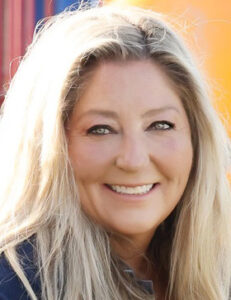
The Parklets on Main Street have unfortunately become a contentious issue. I believe there is room for differing opinions and we, as a community, need to come together and decide what we want for our Main Street. Currently, the council has a consultant working on Main Street. As an accountant, I think our money would be better spent by allowing our community to make this decision.
Having been on the Seal Beach Chamber of Commerce Board, I know that the Parklets served us well during COVID and many people still enjoy them. The Parklets, in fact, saved our treasured restaurants during the unprecedented closure of businesses during COVID. However, they impact the parking that our other merchants and service providers need for their customers.
Together, we can solve this. I want to empower our community to come together and find a solution that our restaurants and other businesses can agree on for the benefit of all. I want to be a representative for our residents and businesses; I want to listen to all sides and then make the best decision possible for our town.
Together, we will make a stronger Seal Beach.
I ask for your vote.
Fred Macksoud

Although the dining parklets were meant to be a temporary outdoor dining area into the public street parking on Main Street, parts of Ocean Blvd., and Central Ave., leading from restaurants into parking areas in front of their businesses, they have grown in popularity with the public, both residents and tourists alike. They also have brought in badly needed revenue from increased sales taxes. Although they can appear to be unsightly and haphazard at present to some people, they can be made more permanent and better looking with time. We have until January 1, 2024 before the State emergency order expires to come up with plans and regulations to present to the Coastal Commission and other regulatory agencies. There is time to improve the appearance of the parklets and make them into added attractions to the downtown area.
Contrary to the opinions of some that the emergency that caused the parklets to be allowed and that they are no longer needed, the epidemic is still not over, and many people would not come to our downtown restaurants to dine without there being the outdoor eating option. Businesses were saved by the parklets when indoor dining was prohibited or limited, and I feel that they should remain as long as possible until we have a better idea of where this epidemic is going.
Very few parking spaces were lost as a result of the parklets and a lot was gained when we needed them.
Based on all of the above, I feel that the parklets should be allowed until further studies can be done to determine how to better regulate them and come up with plans to present to relevant regulatory agencies which will hopefully make the parklets an added attraction to our downtown, enabling more people to enjoy the alfresco dining experience, with the added opportunity to view our beautiful beaches and patronize the other businesses on Main Street.
I have attended a City Council meeting where witnesses have testified for and against them. The pro is primarily that they provide additional business for the restaurants which have erected them and consequently new employment opportunities for servers, cooks, etc.
This appears to be true. We need that added employment.
Mayor Kamlick’s proposal to bring in more people by using a micro shuttle system is a better solution to the complaints of some people that the parklets make the lack of
[Editor’s note: At this point the candidate exceeded the word count.]
Stephanie Wade
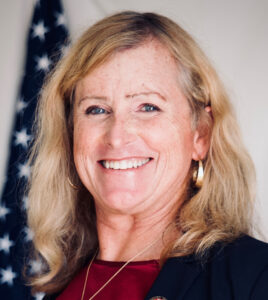
I’ve heard positive and negative impacts of our current parklet program from restaurant and store owners. Based on those conversations, reading the city staff report on parklets, the September 12 Council meeting discussion, and the direction they gave to staff, I believe the city is on the right path. The Council has created an ad hoc committee to revise their emergency COVID plan into a viable, long-term program that will keep the best of outdoor dining in Old Town while balancing the needs of all who walk, do business and enjoy a safe, clean and prosperous Main Street. The Parklet Committee must create a new plan and suggest city codes that will meet five fundamental requirements:
1. Dining space should be limited to restaurant frontage so retail businesses are visible from the street. Retailers helped restaurateurs save their businesses when they were unable to serve indoors, but retail businesses shouldn’t lose business now that COVID restrictions have lifted.
2. Parklet operators must offer dinner service until at least 7:30 PM, six days per week; the space must be used for a productive economic function during peak business hours.
3. Parklet operators must pay a reasonable fee based on square footage. No one wants to hurt our beloved restaurants, but restaurants operating profitable business on city property should pay a fair fee for doing so. Retail businesses without parklets could point to the reduction of parking–even if it were reduced–as a tangible economic cost to all the businesses when parking is reduced. Thus a fee, payable to the city is unquestionably necessary.
The Parklet Committee should consider applying fees paid by parklet operators to create free spaces in the metered lot with signs advertising that the space is paid by a restaurant on a one-to-one basis, so that a business whose parklet occupies three spaces on Main Street would ‘sponsor’ three free spaces in the metered lots.
4. We must have municipal codes holding parklet owners responsible for maintaining the cleanliness of their spaces. The city will have to create a cleanliness code as well as a system to inspect and, where necessary, fine unsanitary operators.
5. The city must ensure that parklets designs are approved by the planning department to ensure that each parklet is safe, of sturdy materials and design, and in keeping with the esthetic scheme of the downtown business district.
Question 4: Would you support a parking structure on either Eighth Street or on the current beach parking lot?
Lisa Landau
While a parking structure on the 8th Street lot would be a faster, less expensive way to add parking, we need to remember that it is in a residential area so, unless the surrounding neighbors were in agreement, that would not be a good choice.
However, utilizing a Public Private Partnership, we could build a structure at the beach that is mostly hidden from view much like what Beverly Hills has done. It could be built under our bluff and covered back over with the park. I would be totally opposed to Federal or State funding as has been proposed by one of my opponents because as we have seen in the past, the strings that are attached to Government funding come back to strangle us. A Public Private Partnership would finance the structure and Seal Beach would receive revenue from the parking without using any city money or increase in cost to the taxpayer.
Through this plan, we gain much needed parking, generate more revenue for the city, use no city money, and most importantly, we maintain our local control. We have lost enough local control already.
I ask for your vote.
Fred Macksoud
There is no doubt that additional parking is needed to support our Main Street merchant district. Finding a parking spot on or near Main Street , Central Avenue. Ocean Avenue and adjacent streets during normal business hours extending into the night is frequently very difficult at all times of the year. During the summer months it becomes extremely difficult to find a spot for many blocks from Main Street, day or night.
We are a car- loving nation, and that is not likely to change for many years, if it ever does change, so something must be done.
I would support building a deck above the city-owned lot at the corner of 8th St. and Central Avenue. I would support that over building the structure on our existing beach lot because I have consistently observed over the years I have lived in our city that the only time that the beach lot is full is during the summer months. At other times of the year, it is lightly or barely used. Why this is so I do not know because it is near the pier, the beaches and the businesses on Main Street and Ocean Avenue. It is also reasonably priced.
The 8th Street lot across from City Hall is closer to the many businesses centered around that area of Main Street and I think it is the better choice because of that proximity. I feel more people will use it because of the location.
Of course funding infrastructure such as an above street-level parking structure is very expensive, Fortunately, we may able to find funding in the recently enacted Federal Infrastructure Law. That is the first place to look and I am sure there is some funding for the 8th St. locatioon.
Funding the structure through the issuance of bonds is not advantageous in this time of rising interest rates.
Whichever way funding the deck on 8th Street is secured, it must be affordable to park there or people just would avoid coming to the downtown area. We do not want that because the downtown area is one of our most interesting attractions.
Stephanie Wade
Maybe . . . I know that this has been a subject of discussion for many years and I might support a parking structure, if it paid for itself within 10 years. But I believe we should be pushing to make our city more bike and pedestrian friendly. I also have high hopes that the city’s plans to bring a trolley system can increase business and leisure activity while reducing car traffic. While I am sensitive to the needs of our business community and am no enemy of cars, I think we should should take at least two years to see if parking improves as the city modifies the parklet program to reducing it’s footprint and as we begin to increase bike access and trolley service. Finally, I’ll point out that building a large concrete parking structure would cause pretty dramatic traffic and environmental issues right near Main Street during it’s construction. It would also certainly require a bond at a time when our ability to borrow is going to be taxed by the renovation of McGaugh Pool and several necessary infrastructure projects. So, I return to my original point about a parking structure: maybe, but not yet.


